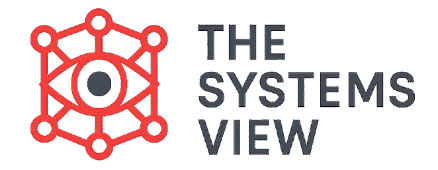We’ve learned that systems archetypes are common story plots that repeat themselves. The first of these is called Fixes That Fail. This is a powerful, and often frustrating, pattern that happens to everyone, from individuals to big companies.
The name says it all. You have a problem, you put a fix in place, and it seems to work. But then, a little while later, an unexpected side effect appears, making the original problem even worse than it was before. This forces you to apply another quick fix, and the cycle continues. It’s like trying to patch a leaky roof with a small piece of tape; the tape might hold for a moment, but the water will find a new leak, and the problem will get bigger.
What is the “Fixes That Fail” Archetype?
This archetype is made of a quick solution that seems to work in the short term, but creates a delayed, unintended consequence that makes the problem even bigger. The key parts of this pattern are:
- The Problem Symptom: Something is wrong and needs to be fixed right away (e.g., low customer satisfaction).
- The Quick Fix: An easy, short-term solution is put in place. It gives immediate relief (e.g., offering big discounts to angry customers).
- The Side Effect: The quick fix creates a new, unwanted side effect. This side effect is often hidden and doesn’t show up right away (e.g., customers become used to discounts, so they won’t pay full price later).
- Worsening Problem: The side effect then makes the original problem even worse, forcing you to use another quick fix, and the cycle repeats.
The “Fixes That Fail” pattern is especially tricky because the side effect can take a long time to appear. This makes it hard for people to see that their “solution” is the real cause of the long-term problem.
Important: The core lesson of “Fixes That Fail” is that when you are solving a problem, you must always think about the long-term consequences of your actions. A quick fix can be very appealing, but it often only hides the real issue and creates more work later.
A Common Example: Software Development
A great example of this archetype is often found in software development:
- Problem Symptom: The company’s new app has a major bug, and customers are angry.
- Quick Fix: The development team rushes to release a quick “patch” to fix the bug. They don’t have time to properly test it.
- Side Effect: The rushed patch has a new, hidden bug inside it. This bug is worse than the first one. It might not show up for a few weeks, so everyone thinks the problem is solved.
- Worsening Problem: A few weeks later, the new, bigger bug appears. Now the company has to release another rushed patch, which might create another new bug. The problem gets worse over time, and the team is stuck in a cycle of constantly fixing bugs from previous fixes.
The Practice Example from the Ebook: The Drunkard’s Search
The ebook gives a great story to help explain this. A drunk man is looking for his keys under a streetlight. A policeman sees him and asks what he’s doing. The drunk man says, “I dropped my keys over there, in the dark alley.” The policeman asks, “Then why are you looking for them here?” The drunk man replies, “Because the light is better over here.”
This story is a perfect example of “Fixes That Fail.” The drunk man’s “problem” is that he lost his keys. His “fix” is to look where the light is good. This fix feels easy and effective, but it has a side effect: he will never find the keys. His problem (lost keys) is still there, and his fix is only making him waste time and become more frustrated. This is why it’s so important to solve the real problem, not just the one that is easiest to fix.
How to Find a Lasting Solution
Solving this archetype requires you to resist the temptation of the quick fix and focus on the deeper problem.
- Identify the Side Effect: Look for the delayed, negative consequences of your past solutions. Ask: “How did our last solution make things worse in the long run?”
- Focus on the Fundamental Problem: Stop using quick fixes. Shift your energy to finding the real, root cause of the problem. If a company has a bug in its software, the fundamental problem is not the bug itself; it might be a rushed development process or a lack of testing.
- Choose the Long-Term Solution: Once you find the real cause, put a more lasting solution in place. This will take more time and effort, but it will solve the problem for good. For the software example, this might mean a new, slower, but more careful testing process.
- Manage the Short-Term Symptoms: You might still need to manage the immediate problem while you work on the long-term solution. For example, you can still give some discounts, but your main focus should be on fixing the core issue of product quality.
Conclusion
The “Fixes That Fail” archetype teaches us that not all solutions are created equal. The most attractive, quick fixes often come with a delayed price, which can make a problem worse over time. By learning to recognize this pattern, we can resist the urge to just put a bandage on a problem. Instead, we can shift our focus to finding and solving the deeper, fundamental issues. This is the only way to break the cycle and achieve real, lasting change.



